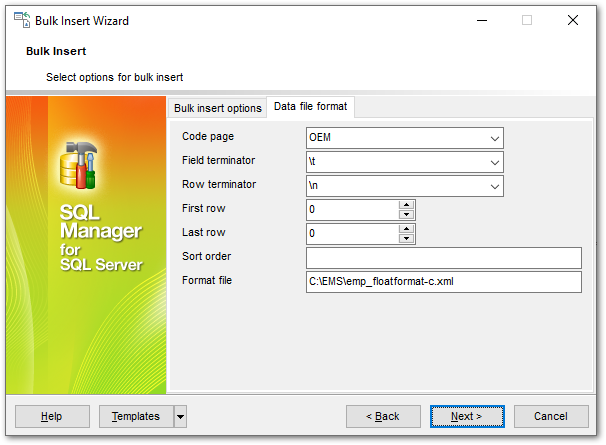Online Documentation for SQL Manager for SQL server
Customizing data file format
Code page
Use this drop-down list to select the code page of the data in the data file: ACP, OEM or RAW. This option is relevant only if the data contains char, varchar or text columns with character values greater than 127 or less than 32.
- ACP: columns are converted from the ANSI/Microsoft Windows code page (ISO 1252) to the SQL Server code page
- OEM: columns are converted from the system OEM code page to the SQL Server code page
- RAW: no conversion is performed
Field terminator
Use the drop-down list to specify the field terminator to be used for char and widechar data files: tab character (\t), comma (,) or semicolon (;).
Row terminator
Use the drop-down list to select the row terminator to be used for char and widechar data files: newline character (\n) or return character (\r).

First row
Specify the number of the first row to load.
Last row
Specify the number of the last row to load. If this parameter is set to 0, the last row to load is the last row in the specified data file.
Sort order
{ column_name [ ASC | DESC ] } [ ,... n ]
This string specifies the way the data in the data file are sorted. Bulk insert operation performance is improved in case the data are sorted according to the clustered index on the table. The column names supplied must be valid columns in the destination table. By default, the bulk insert operation assumes the data file is unordered.
Format file
Specify the full path of a format file. A format file describes the data file. The format file should be used in the following cases:
- The data file contains greater or fewer columns than the table or view
- The columns are in a different order
- The column delimiters vary
- There are other changes in the data format
Click the Next button to proceed to the Viewing the result SQL statement step of the wizard.



































































